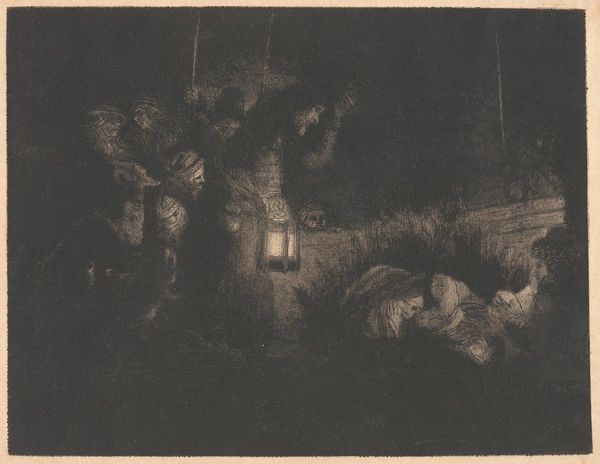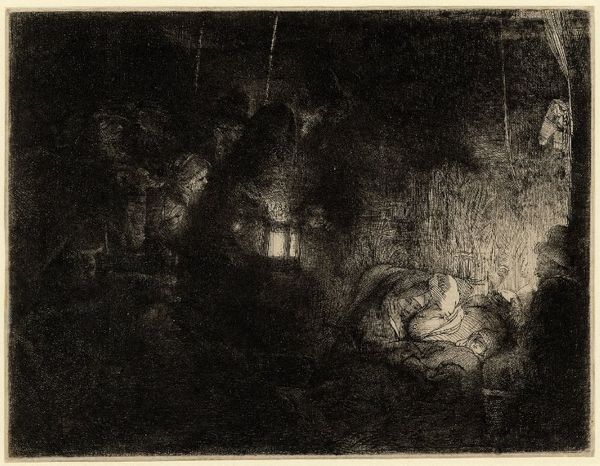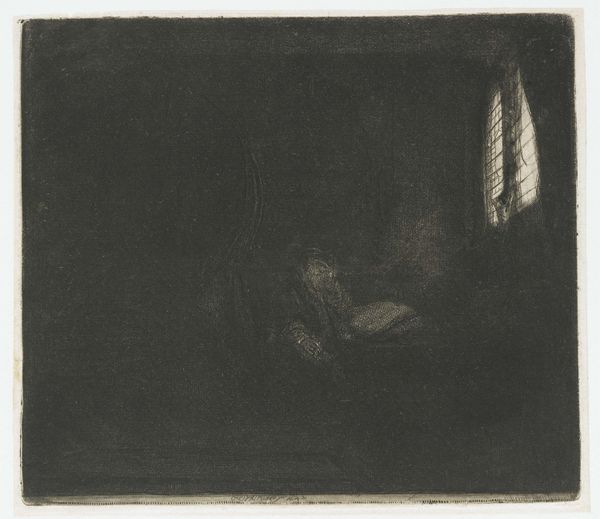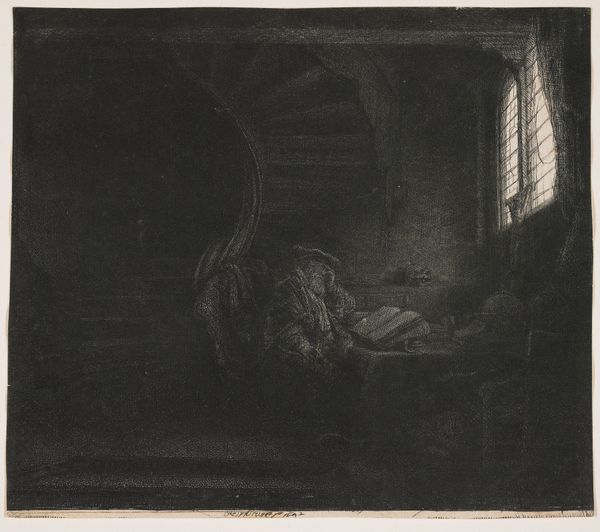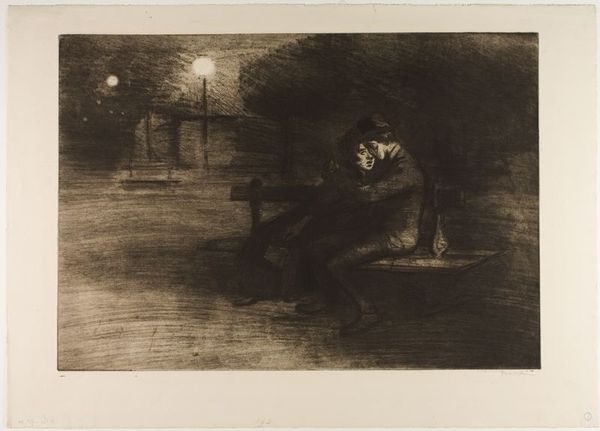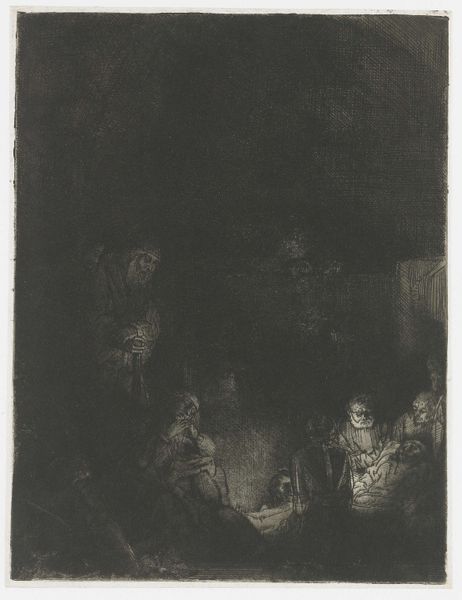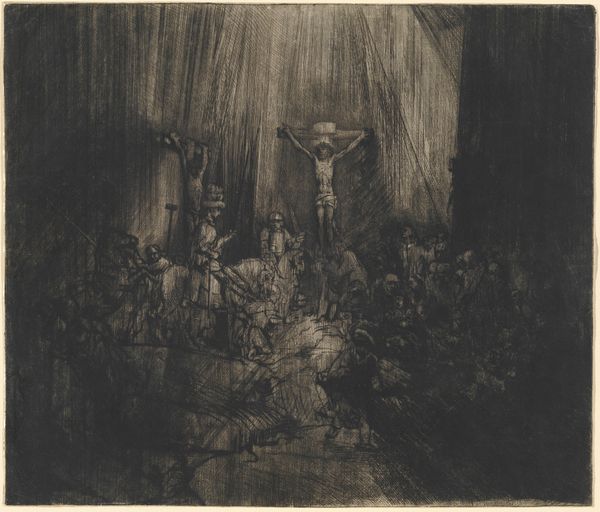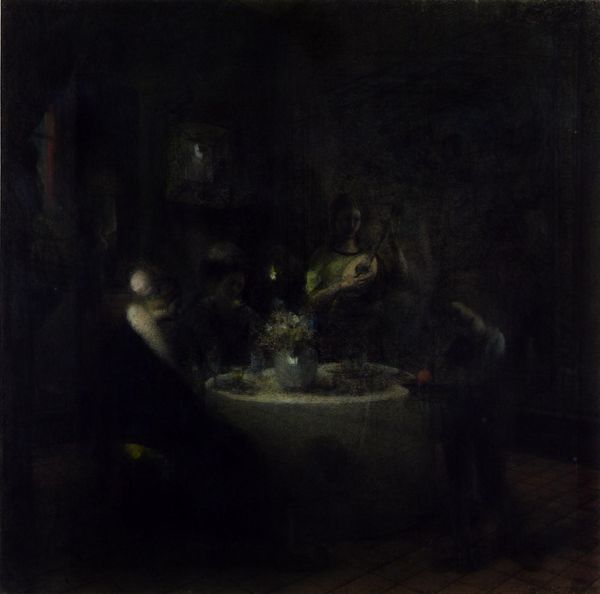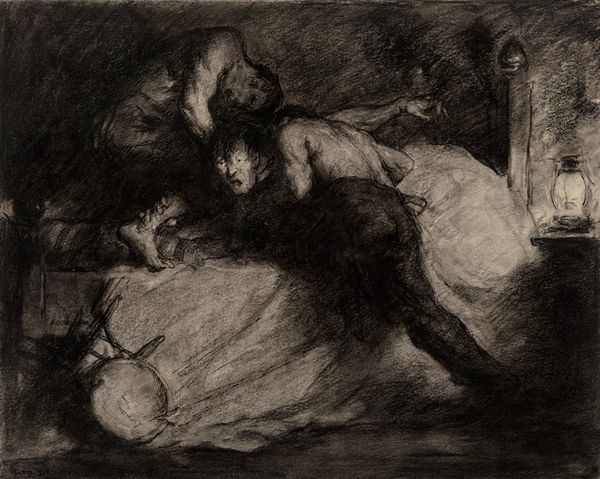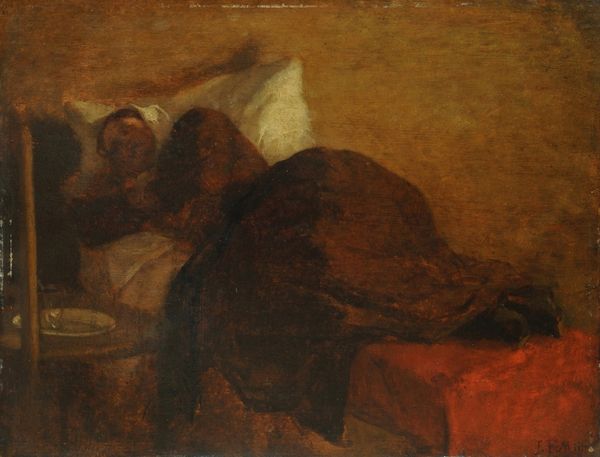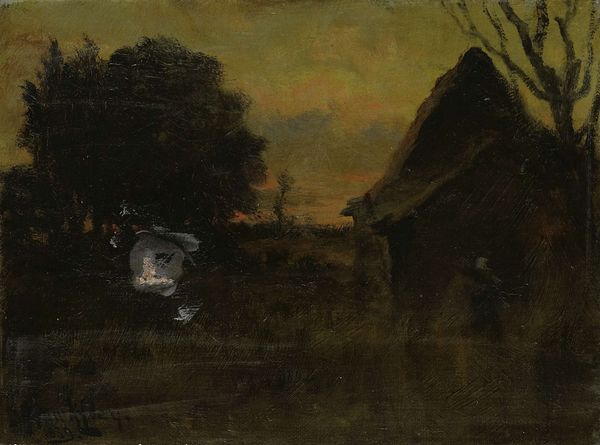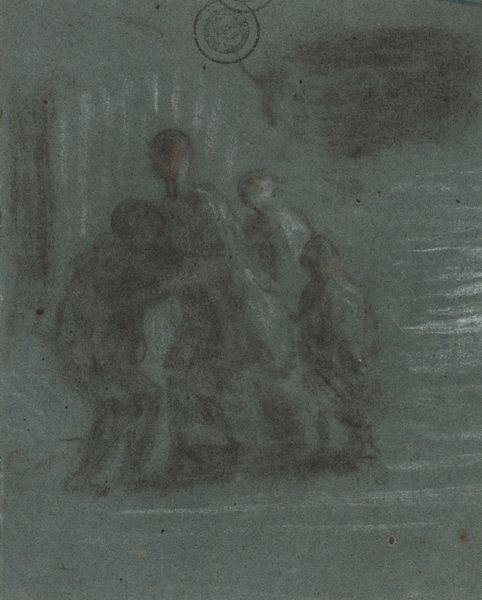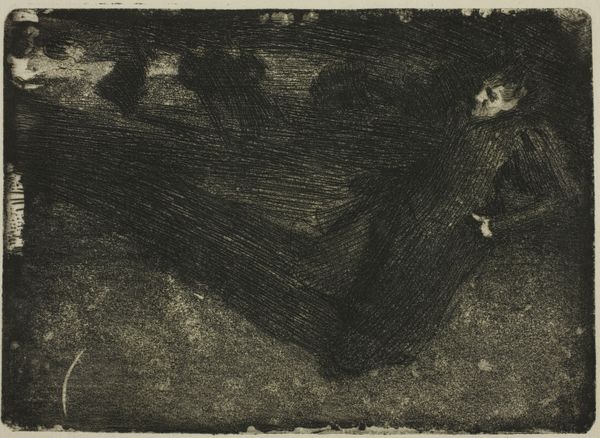
drawing, charcoal
#
drawing
#
charcoal drawing
#
group-portraits
#
symbolism
#
charcoal
#
charcoal
#
modernism
Dimensions: 101 cm (height) x 123.5 cm (width) (Netto), 108.4 cm (height) x 130.2 cm (width) x 5.2 cm (depth) (Brutto)
Curator: Here we have Vilhelm Hammershøi's "Evening in the Drawing Room," created in 1904 using charcoal. The work resides here at the SMK, Statens Museum for Kunst. Editor: It's so somber, isn't it? Almost claustrophobic. All that darkness. It makes me think of late nights filled with quiet, tense conversation. Curator: The drawing style contributes to that feeling. Charcoal is such a stark medium; there are few opportunities for nuances of color, everything falls to shades of black. That inherent austerity lends itself well to symbolist approaches, I think. Editor: And look at these figures huddled around the table, rendered almost ghostlike by the charcoal. Their faces barely discernible, giving them the feeling of people we once knew who’s memory is starting to fade. There is a strong tension with these people at a table, but completely withdrawn, in and with themselves. It’s strange how Hammershøi, who became renowned for depicting empty interiors, decided here for some people around a table. Curator: Hammershøi’s spaces are frequently interpreted through a lens of melancholic solitude. This drawing might function as a comment on societal connection at the time. Are these figures meant to represent the artist and his circle, perhaps highlighting the performative aspect of socializing within elite cultural circles? A silent indictment of their society. Editor: Or maybe he's commenting on something simpler, more universal? The isolation one can feel even in a crowded room? Curator: A perpetual debate with Hammershøi. What appears at first glance as merely descriptive always hints at something more profoundly psychological and subtly unsettling. It reminds me a little of Whistler’s work and his interest in impressionist depictions, a search for inner experience through painting. Editor: In the context of art history, this period saw a real flourishing of symbolist explorations. Hammershøi found a place there by making the mundane monumental through technique. Curator: Ultimately, this is a testament to how artistic expression uses these formal means to suggest meanings well beyond the immediate picture frame. Editor: Leaving us with the enduring echo of lives lived in quiet corners. Thank you.
Comments
No comments
Be the first to comment and join the conversation on the ultimate creative platform.

